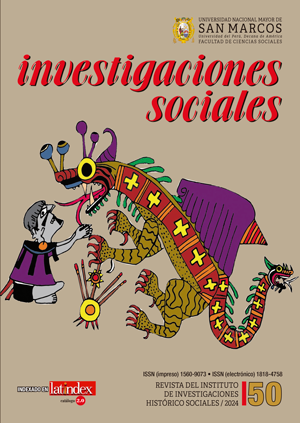Province of Chancay (Lima): heyday and disappearance
DOI:
https://doi.org/10.15381/is.n50.29842Keywords:
Chancay Province, desintegration, rurality, migration, yanaconaje, agrarian reformAbstract
Between the forties and sixties of the twentieth century, the province of Chancay was the one whose population grew the most in comparison to the other provinces of Lima, transforming itself from a rural to an urban society and turning into an economic axis because of the rural migrations from the Andean provinces of Lima, Ancash, Huánuco and Pasco and the potential of their wide and fertile valleys in the basins of Pativilca, Huaura, Supe and Chancay, which increased agro-industrial, commercial and industrial fishing production. The intense trade unions and yanacona movements accelerated the agrarian reforms mediated by the oligarchic gamonalist power in the 1960s, and, after the agrarian crisis and the decapitalization of farms and agrarian cooperatives, the phase of collapse and disappearance of Chancay began, was called the “lost decade” of the most important province of the central coast, by maneuvers of the Peruvian Congress and the Executive Power. This article is a reflection on this significant and atypical socio-historical, cultural and political phenomenon of the province of Chancay and the survival of its heritage in the port of Chancay, which is projected as an important place with a regional and global perspective due to its strategic geopolitical location.
Downloads
Published
Issue
Section
License
Copyright (c) 2025 Franklin Miranda Valdivia

This work is licensed under a Creative Commons Attribution 4.0 International License.
AUTHORS RETAIN THEIR RIGHTS:
a. Authors retain their trade mark rights and patent, and also on any process or procedure described in the article.
b. Authors retain their right to share, copy, distribute, perform and publicly communicate their article (eg, to place their article in an institutional repository or publish it in a book), with an acknowledgment of its initial publication in Investigaciones Sociales.
c. Authors retain theirs right to make a subsequent publication of their work, to use the article or any part thereof (eg a compilation of his papers, lecture notes, thesis, or a book), always indicating the source of publication (the originator of the work, journal, volume, number and date).






